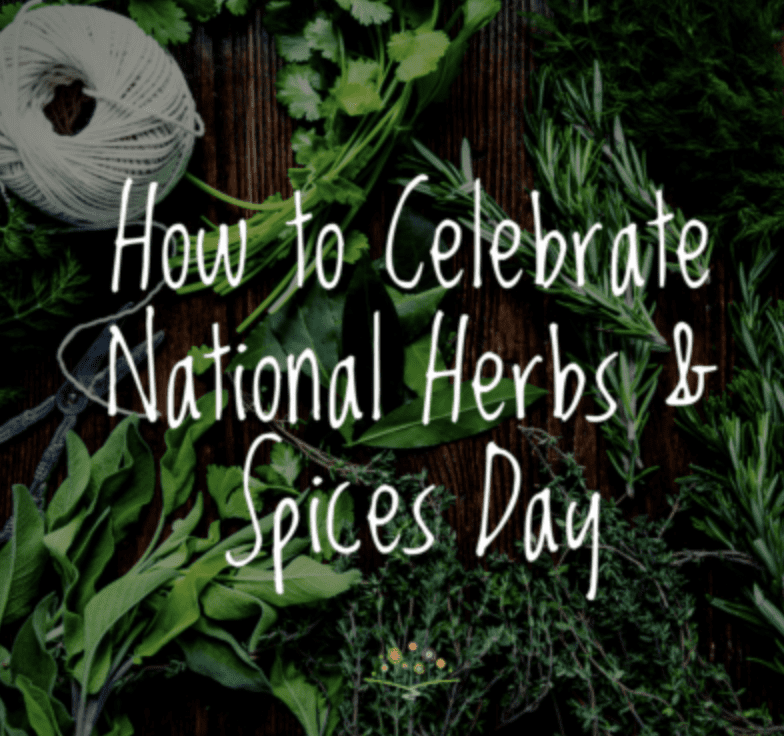
The key to achieving a flavorful dish while cooking is to season it every step of the way, carefully curating the taste of your food with whatever you choose to use. Different kinds of herbs and spices provide distinctiveness to cuisines around the world and have been utilized in various forms of traditional medicine throughout history. On June 10th, we celebrate the power of herbs and spices and their ability to make any meal complete while providing essential vitamins and minerals that can help promote natural healing in the body.
What are Herbs?
An herb is the leafy part of an aromatic plant that is often used in cooking, medicine, and fragrances. Herbs can be used either fresh or dried depending on the application.
Some common types of herbs:
- Basil is a very aromatic herb with a warm, spicy flavor that is perfect for use in soups and sauces. It is also associated with various spiritual beliefs and rituals.
- Cilantro is one of the most widely-used herbs around the world and is known for its tart, lemon-like flavor. It works well in both meat and vegetable-based dishes and can help with relieving inflammation and indigestion.
- Mint is another highly aromatic herb that has a fresh, minty flavor. It is often used in teas and other beverages, fragrances, and as a natural remedy for stomach aches and nausea.
- Parsley is a hardy herb with a mild, bitter flavor that is perfect for use in soups and stews or as a garnish. It may also help boost the immune system with its anti-bacterial and anti-inflammatory properties.
- Rosemary is a woody perennial that has a strong, astringent flavor. It is popular in Mediterranean cuisine and can be used to soothe pain and indigestion.
What are Spices?
Spices come from the parts of plants that are not leaves, such as stems, bark, berries, or roots. Spices are always used dried (and often ground) in cooking, preservation, and medicine.
Some common types of spices:
- Cinnamon is one of the oldest-known and most popular spices and has a distinctly soft and spicy flavor. It can be used in both sweet and savory dishes and is often found in desserts and baked goods.
- Cumin is known for its earthy and nutty flavor which gives dishes a smoky, spicy kick. It is used in cuisines around the world and may help regulate blood sugar and digestion.
- Paprika is a smoky, sweet, and earthy-tasting spice that is derived from the pepper of the same name. It is popular in Spanish and Mexican dishes and is well-suited for use in soups and stews.
- Nutmeg is cultivated from tropical evergreen trees and has a pungent, subtly sweet flavor. It is often used in baked goods and beverages and may help with indigestion and loss of appetite.
- Turmeric is a widely-used Indian spice with a bitter, spicy flavor. It is sometimes referred to as the “golden spice” due to its bright orange color and anti-oxidant and anti-inflammatory properties.
Growing Your Own Herb & Spice Garden
Whether you are using them for flavor in a new recipe or for naturally healing the body, keeping various types of herb and spice plants on hand will ensure that you always have access to the freshest ingredients. Thankfully, many are typically easy to cultivate at home if you wish to start your own garden in just a few steps.
First, it is important to find an ideal spot where your plants will thrive. If you live in an area that is warm year-round, you may be able to maintain your garden outside. Otherwise, with cooler climates, it would likely be best to keep your garden inside. Additionally, you will want a space that receives adequate sun, with at least five to six hours of direct light per day.
Next, you will need to choose plants that you are likely to use and that match your gardening abilities. Consider the types of flavors you enjoy and the potential ways you will use each plant. If you need suggestions, your local garden center is a perfect place to get advice from seasoned professionals about which herbs and spices would be best for you to grow.
Finally, as with any type of garden, you will need to be committed to the upkeep. Using good soil with enough room for drainage and root growth is key to maintaining healthy plants. You may regularly want to add fertilizer to ensure your herbs and spices are getting enough nutrients. And, of course, properly watering your plants once the soil becomes dry will keep them in the best condition possible.
To get started on a flavorful garden of your own, come visit our greenhouse and let us help you choose the best plants for your palette and abilities.
_________________________________________________________________________
To see what’s springing up around the greenhouse, sign up for our newsletter.



